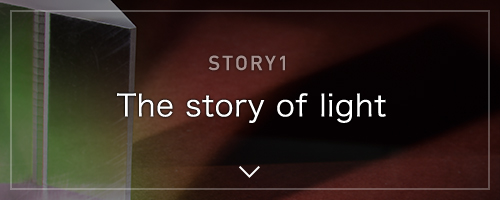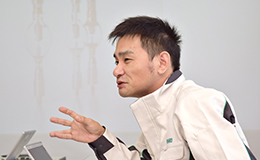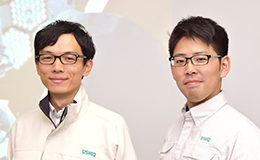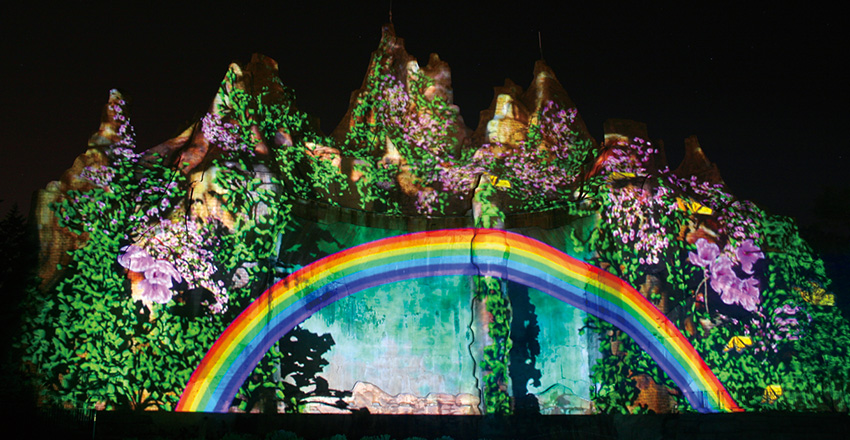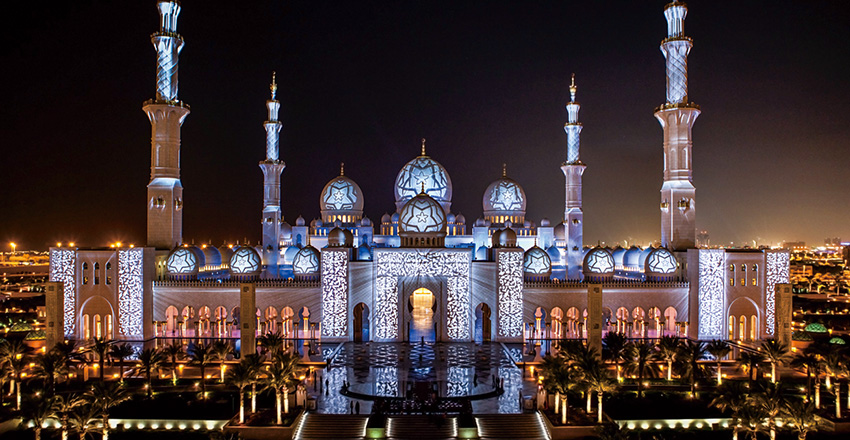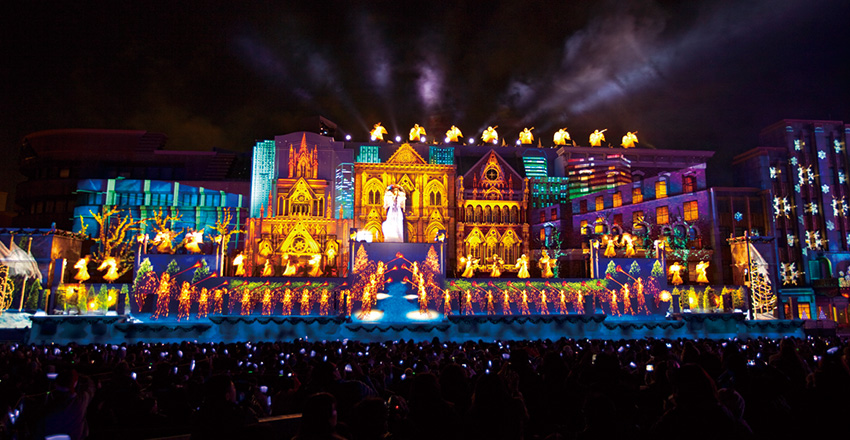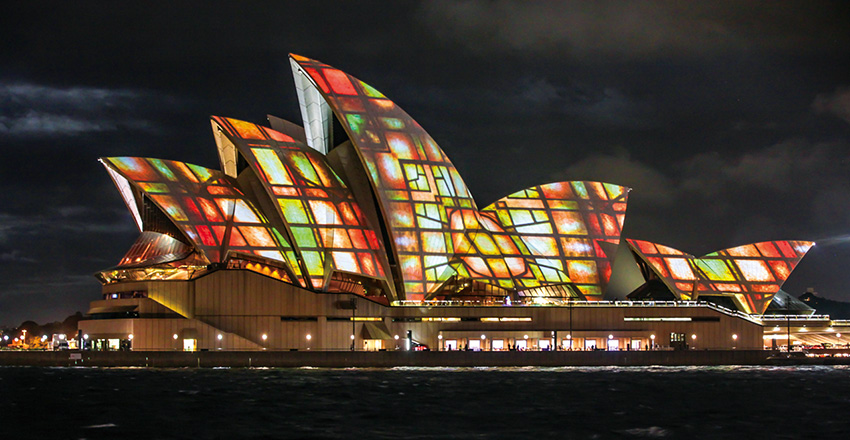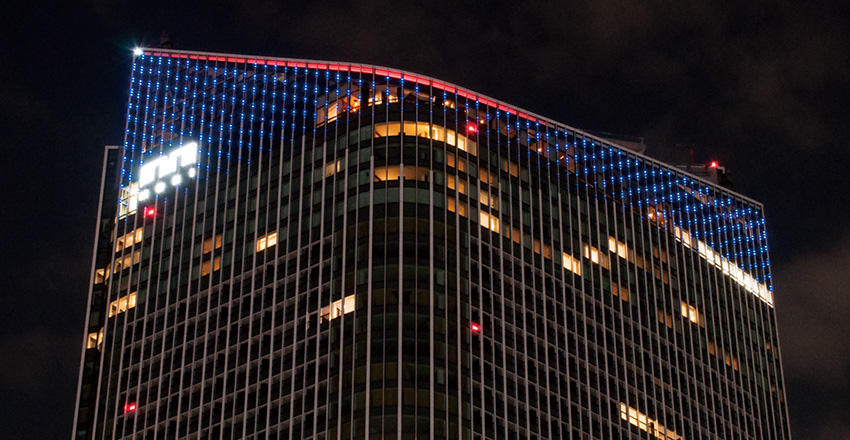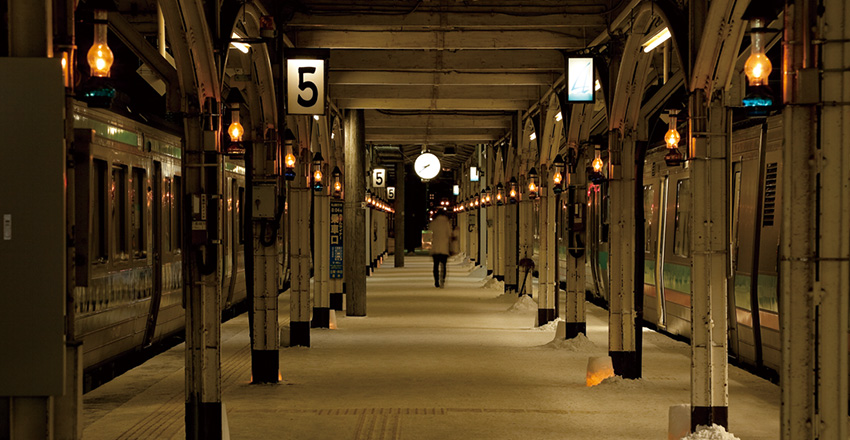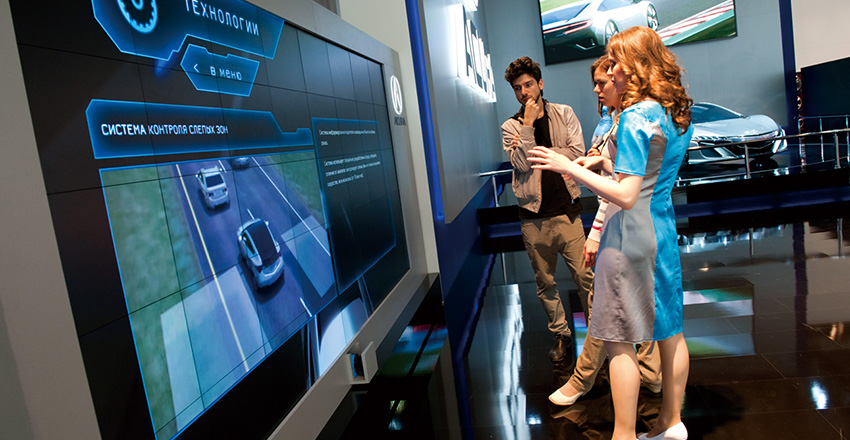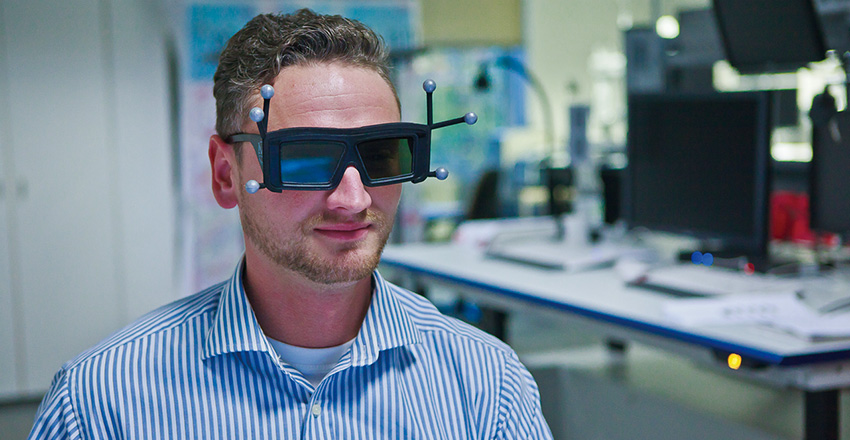One hundred twenty years and counting since Edison's invention
of the incandescent light bulb.
Less than half a century since light came into use as energy.
'Light' now finds applications everywhere,
from daily life to cutting-edge technology.
We introduce various light-related topics to illuminate USHIO,
the company that produces light
and looks to light's role in the future.
- STORY1 -
The story of light
From ancient times up to the 21st-century modern day,
people have sought to unlock light's secrets and turn them to their advantage.
Some found ingenious ways of using light, while others have discovered light’s hidden
properties. As we trace the relationship between light and humanity, we will introduce
the technologies and thoughts of these forerunners, Ushio’s predecessors.
The Pharos of Alexandria
Burned enemy ships by reflected light, illuminated objects 50 kilometers away
Said capable of burning ships by reflected light, and producing rays so powerful they could be seen from 50 kilometers away, the Pharos of Alexandria was a 130-meter tall lighthouse that was constructed in the Egyptian city of Alexandria in the 3rd century B.C.
By legend, the sunlight reflected by its mirror could char wooden ships, and sailors could see its light even 50 kilometers out to sea.
Of course, the legends are viewed with some skepticism.
However, no one doubts that people have been using various means to collect and use light since ancient times.
Who can say that the Pharos of Alexandria, one of the Seven Wonders of the Ancient World, was not the origin of some of today’s optical technologies?
Newton’s Fascination with Light
Discovery of light’s color spectrum using a prism
In 1668, Newton succeeded in using a prism to divide white light into seven components. He invented the term “spectrum” to refer to the array of beautiful colors that results.
Newton’s proposition — “What appears to us as white light is actually composed of many wavelengths” — would profoundly influence the later development of optics and lead to the discovery of light that is invisible to the eye; that is, ultraviolet and infrared.
The seven colors of light released by Newton’s prism continue to shine on various corners of society even today, 350 years later.
Edison’s Thoughts on Making Things
Improving the incandescent light bulb and extending its life
Although known as the king of invention, the truth is that Edison did not actually invent the incandescent light bulb.
His great achievement was to improve the light bulb, increasing its life enough for it to be put to practical use.
He studied the reasons for the short life of incandescent filaments, and succeeded in increasing it by using slivers of bamboo which he obtained from Kyoto, Japan.
He went on to launch the world’s first lighting business in New York in 1881.
“Genius is one percent inspiration and ninety-nine percent perspiration.”
This well-known quotation succinctly summarizes Edison's attitude toward invention.
Growing Plants with Invisible Light
A new solution to the problem of stimulating photosynthesis
Photosynthesis: The process by which plants produce oxygen and nutrients from carbon dioxide, water and the energy of light.
Working in the 19th century, the German botanist Engelmann performed experiments to determine which wavelengths of light are most suited to producing oxygen.
What he found is that infrared light of longer wavelength plays a much more important role in photosynthesis than does visible light.
Through advances in this research, it is now known that whereas red light plays an important role in photosynthesis, blue light affects the formation of leaves.
It has also been found that the production of nutrients can be controlled by irradiating plants with light of specific wavelengths during the growth stage.
There is great mystery in the relationship between light and plants.
We believe that a world of future possibilities can be realized by unraveling this mystery.
Light: The Next Chapter
in the Human Story
Since ancient times, humans have been fascinated by light. It plays a role in many legends, and has been the object of reverence through generations.
In its efforts to employ light as energy as well as a source of illumination, Ushio has taken on a new challenge. Today, light is used in many different forms which have become an indispensable part of our daily lives.
For example, “light for electronics” plays an essential role in the manufacture of semiconductors and electronic components; “light for visual imaging” plays a role in art forms that surprise and delight; and “light for life science” plays a role in protecting and developing life and nature.
Light: It helps keep society safe, comfortable and secure.
Staying true to the spirit of those who have gone before, we will continue to challenge the boundaries of light.
- STORY2 -
The possibilities of light
The characteristics of light vary at different wavelengths.
Discovering the characteristics of the various wavelengths and exercising
control in order to use light as a tool: This is the job of Ushio’s technology.
Seven light varieties of Ushio
-
WavelengthThe light required fromamong many.
Ultraviolet -- Visible light –
Infrared -
The form of lightBecause it's light,it can take any form:
Spots, or lines, or planes. -
Light sourcesIt's not the light source you choose,
but the type of light:
LED, lamp, laser, or EUV. -
CustomizeLight's applications have no bounds.
Light source, to light
unit, to light system
-
SpecificationsWhat do YOU want to build?
And, light can change:Radiation intensity,
irradiation area, light source size, operating life -
OutputFrom small lights to large.
Ranging from 10 watts,to 35 kilowatts -
TemperatureFrom low temperature to high, light gives
complete flexibility of control.
Room temperature to 3,000°C
Turning light into energy and illumination
Discovering the characteristics of the various wavelengths and exercising control in
order to use light as a tool: This is the job of Ushio’s technology.
ELECTRONICS
culture and society.
- Curing and Bonding
- Aligning
- Drawing
- Cleaning
- Inspecting
- Heating
- Measuring
LIFE SCIENCE
Ushio makes a great contribution
to health and the global environment.
- Protecting
- Nurturing
- Preventing
VISUAL IMAGING
by fully utilizing a variety of light sources.
- Light sources
- Systems





